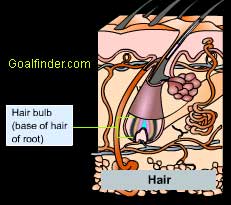|
|
>>
New User Register 

Login Member:
|
|
|
|
| Hair is mostly protein, one of nature's polymers. it is a chemical, its pigments and proteins are all chemicals, how these chemicals give color and structure to hair is an interesting study by itself, animation details out medulla, cortex, cuticle, keratin, melanin, eumelanin and phaeomelanin, and gives the hair protein structure. This animated topic gives in-depth information chemistry and structure of hair.
|
Structure and chemistry
of hair
Content : Educational
science software
Type : Animation
Duration : 9 minutes
Topics Covered :
- What is the structure of hair protein?
- What is chemical composition of hair?
- What is Medulla, Cortex, Cuticle?
- Which amino acids are present in hair?
- Which chemical is responsible for coloring of hair?
|
|
|
|
|
Pigments and structure of hair protein
|
 |
 |
|
Hair root and follicle
|
Hair, medulla, cortex and cuticle
|
|
Content of the science animation
: Hair is mostly protein, one of nature's polymers.
The structure of protein in hair is a-helix structure.The
structure of protein is depend on the position of the C=O---H-N
hydrogen bonds.
The innermost layer of the hair is the medulla. This layer
of hair is often missing in fine hair or light blonde hair.
Its purpose is unknown. The middle layer of the hair is
the cortex, responsible for giving the hair its elasticity,
tenacity, and strength. It is in this layer that pigment,
the substance that gives color to the hair, is found. In
this layer, chemical changes take place, once the cuticle
has been penetrated.
Hair is composed of a fibrous protein, keratin, which originates
in the hair follicle. The hair is made up of long amino
acid chains joined to each other by peptide bonds.
The hair gets its color from a pigment known as melanin.
The color of a person's hair is determined by their genes.
Melanin is produced by melanocytes, cells that exist near
the hair bulb. They collect and form bundles of a pigment
protein complex called melanosomes. There are two types
of melanin, eumelanin which is brown/black in color and
phaeomelanin which is red.
All about it inside the animation.
|
|
|
|
|
| |
 Short should be more lengthy but good content by amit
Short should be more lengthy but good content by amit |
| |
|
|
|
|
|

